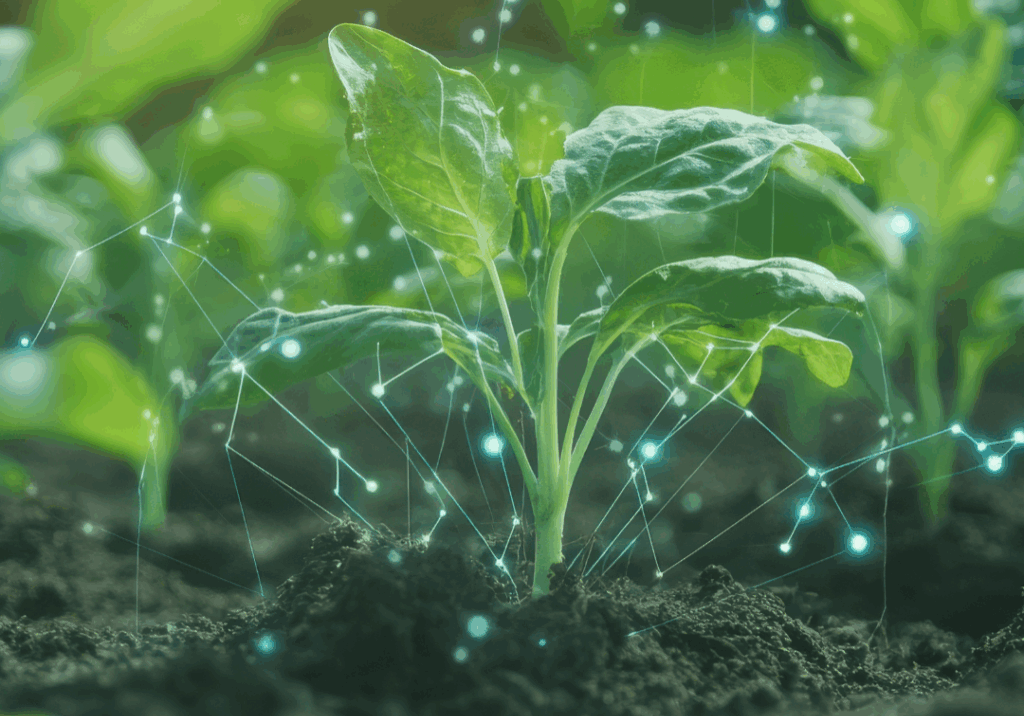The Emergence Of Divine Love Through Human Suffering
In the 1970s it was common to critically compare the thought of Teilhard de Chardin with Sri Aurobindo (née Aurobindo Ghose, 1872-1950).1 I discovered Sri Aurobindo and his spiritual partner the Mother (née Mirra Alfassa, 1878-1973) through another Catholic priest, Fr. Bede Griffiths. Griffiths writes that “In the integral Yoga of Sri Aurobindo [and the Mother], the values of matter and life and [mind], and the experience of the personal God, are not lost in the ultimate Reality, the divine Saccidananda. Matter and life and [mind]… are seen to be evolving toward the divine life and the divine consciousness, in which they are not annihilated but fulfilled. This is [also] the goal of a Christian Yoga.”2
In this short space I can merely introduce some basic yogic principles that address the tension of divine love and human suffering. The Mother and Sri Aurobindo’s teaching is an embodied growth experience through love, beauty, and delight that they called “the life divine.” Sri Aurobindo writes, “To bring the Divine Love and Beauty and Ananda [delight] into the world is, indeed, the whole crown and essence of our Yoga.”3 This view is based on their experience of God’s experience: Saccidānanda (Sat+Cit+Ānanda or Being+Consciousness+Bliss). For them, Cit is the Force (Śakti) that applies pressure for growth on all creatures and it is integrated with the experiences of Sat (being) and Ānanda (delight).4 Love and beauty play a central role since they are “Ānanda taking form” in and as creation.5 We could say that their goal is to perfect the basic consciousness (citta) of the spiritual student such that it becomes God’s consciousness (Cit)—transforming, not transcending one’s body and the Earth. In their view, progress towards this exalted goal is fueled by extreme oppositions. Similar to the pressure of a cocoon on the larva to catalyze a process of transformation, these gurus designed difficult, and oftentimes, impossible circumstances tailored for each disciple in the Sri Aurobindo Ashram for the purpose of strengthening and universalizing one’s growing consciousness. The attitude of joyful surrender is the crucial counter-pressure involved with this difficult process. It is the attitude of the larva to willingly stay within that tight squeeze knowing that to do so will invite death, but also new life in a future form that the guru embodies.
In Indian student/teacher traditions, Karen Pechelis writes, the “guru is understood to experience the real continuously;” the “real” being the experience of Brahman, the Supreme Godhead.6 Further, the “guru is able to inspire the experience of the real in others, for the purposes of spiritual advancement, total self-realization, or evolution as a human being.”7 The word “guru” may come from the Sanskrit root √gri (to invoke or to praise) or √gur (to raise up, to make an effort). As an adjective, guru means “heavy,” that is, heavy with spiritual significance.8 It is a cognate of the Latin, gravis, which means grave, heavy, serious.9 The guru is the weight of wisdom’s pressure on the student, stimulating the elevation of consciousness in the context of the student’s labor (and the guru’s play or līlā). The Mother and Sri Aurobindo are regarded as the gurus of the Ashram, living embodiments of the pressure and weight of Cit—what they actually call the Cit-Śakti or “Conscious-Force”—so their students aspire to surrender their citta to that forceful weight in order to become it.
The Gurus think that all oppositions (suffering, falsehood, ignorance, death, etc.) are not only crucial for the growth process in their yoga, but also fundamental to evolutionary development in creation, at least as it is currently configured. Sri Aurobindo wrote an aphorism that expresses this principle:
“This world was built by Cruelty that she might love. Wilt thou abolish cruelty? Then love too will perish. Thou canst not abolish cruelty, but thou mayst transfigure it into its opposite, into a fierce Love and Delightfulness.”10
In commentary, the Mother writes “oppositions and contraries are a stimulus to progress.”11 Cruelty, in this case, exists in the evolutionary process as a stimulus for fierce love. For them, oppositions are woven by God into the fabric of creation to awaken “a call for a Power of Eternity with an intensity which would not be there except for [these] constant threat[s].”12 This principle describes how atavistic forces in one’s personality, society, and in nature automatically seek to oppose new growth since any new form, by law, displaces the old. These established forms do not want to be displaced, and so they resist the new potential. The resulting conflict is necessary to prove the worth and to strengthen the presence of the new form.
The Mother taught this principle through plants. Over the years, she named 898 flowers and exchanged them with her ashramites as a way to deepen their contact with nature and with her consciousness. If one studies these names along with her commentary, as well as the colors, the botany, and even medicinal qualities in some cases, one can come to a very full understanding of the Integral Yoga. She would give a student a daffodil, for instance, if she thought the student could benefit from the “Power of Beauty,” which is what she calls this flower.13 The Mother writes that with the evolution of organic life “the vital element [is introduced in creation], and it is this vital element that gives to flowers the sense of beauty.”14 For the Mother, this inchoate vital nature makes flowers automatically aspire for light, leading to sacrifices of beauty in their blossoms. To merge one’s consciousness with flowers is to feel this aspiration. She says “plants have more [aspiration] in their physical being than man. Their whole life is a worship of light. Light is of course the material symbol of the Divine, and the sun represents, under material conditions, the Supreme Consciousness. The plants have felt it quite distinctly in their own simple, blind way. Their aspiration is intense, if you know how to become aware of it.”15 The Mother recommends communing with nature at night. She writes,
When the sun sets and all becomes silent, sit down for a moment and put yourself into communion with Nature: you will feel rising from the earth, from below the roots of the trees and mounting upward and coursing through their fibres up to the highest outstretching branches, the aspiration of an intense love and longing.… There is a yearning so pure and intense that if you can feel the movement in the trees, your own being too will go up in an ardent prayer for the peace and light and love that are unmanifested here.16
Of course, it is true that sunlight helps plants to grow. However, the Mother reminds us of the crucial role of darkness. It stimulates growth beyond natural boundaries into the realm of what she calls progrès or progress, a word that she uses over two thousand times in her writings. If one wants to pressure a plant to progress beyond normal size, it is important to put it “in a place where there is no sunlight,” for there “you see it always growing up and up and up, trying, making an effort to reach the sunlight.”17
As guru, she placed her disciples in darkness in individual ways to awaken evermore aspiration for the Divine, becoming more upright in soul and body.
Is it possible for creation to evolve matter without opposition, to progress without this crude means of alternating darkness and light? The Gurus claim that such an evolutionary stage has begun in nonvisible realms—planted like a seed hidden in the soil—what they call “the new supramental creation.” It is clearly not here in its fullness, but they claim that it will flower in due time, a golden age of joy, selfless service, and human fulfillment, where the interior spiritual experience of union with God is universally exteriorized in matter and life; where consciousness is naturally centered, not in the mind, but the heart, and one lives from an unfiltered experience of revelation, inspiration, and memory of the true Self. This controversial claim has resonances with views like Teilhard’s vision of the Omega Point that needs a lot more analysis.
NOTES
- See R. C. Zaehner, Evolution in Religion: A Study of Sri Aurobindo and Pierre Teilhard de Chardin (Oxford: Oxford University Press, 1971); Beatrice Bruteau, “Sri Aurobindo and Teilhard de Chardin on the Problem of Action,” International Philosophical Quarterly 12, no. 2 (1972): 193-204; and Jan Feys, The Yogi and the Mystic: A Study in the Spirituality of Sri Aurobindo and Teilhard de Chardin (Columbia, MO: South Asian Books, 1977).
- Bede Griffiths, Essential Writings (Maryknoll, NY: Orbis Books, 2004), 87.
- Sri Aurobindo, Letters On Yoga II, (Pondicherry: Sri Aurobindo Ashram Press, 2013), 333.
- See Sri Aurobindo, The Life Divine, (Pondicherry: SAAP, 2005), 80-121.
- Sri Aurobindo, Letters on Poetry and Art, (Pondicherry: SAAP, 2004), 700.
- Karen Pechilis, The Graceful Guru: Hindu Female Gurus in India and the United States (Oxford: Oxford University Press, 2004), 4.
- Ibid., 5.
- Sir Monier Monier-Williams, A Sanskrit-English Dictionary (Delhi: Motilal Banarsidass Publishers, 2005), s.v. “guru.”
- Robert K. Barnhart, The Barnhart Dictionary of Etymology (New York: H.W. Wilson Co., 1988), 447.
- The Mother, On Thoughts and Aphorisms, (Pondicherry: SAAP, 2001), 164.
- Ibid., 165.
- Ibid., 164.
- The Mother, The Spiritual Significance of Flowers: Part I, (Pondicherry: SAAP, 2000), 177.
- The Mother, Flowers and Their Messages, (Pondicherry: SAAP, 2012), ii.
- Ibid.
- Ibid.
- Ibid., i.
 View print-friendly version
View print-friendly version
5 Comments
Related Posts

Is Christianity in Crisis or Transition?
We are facing an unprecedented convergence of crises: global warming, climate change, mass migration, and systemic ecological collapse. Our planetary systems are exhausted and no longer able to sustain human…


Hi Patrick,
I came back to this website and found it helpfully refreshing! I had just wrote something about the world being difficult and media broadcasting things that kept us in fear and I felt right, and I felt it would help others. But before I put that up online I was drawn back to your blog and I reread your piece and I realized how wonderfully different real truth is.
It’s simply beautiful to read about opposition not only being okay but something needed for life to move forward. I am really grateful I came back and reread your work! I would find it really helpful if you feel inspired to write about Trump and the importance trump represents. It’s so easy to feel powerless especially with some things that are said in debates and the like, but there is something empowering and encouraging in thinking this is what is supposed to be!
I found Patrick’s article on spiritual progression and opposition to be super interesting and although I didn’t know much he explained it in a way I could understand.
And what a wonderful conclusion!
Thank you James. I think this principle of opposition fueling growth is very important. Ilia and I have discussed it as it as has resonances in scientific understandings of growth in the universe. One can also find it in psychology and biology. The way a baby’s immune system is strengthed by disease comes to mind.
I’ve been thoughtful about the crude opposition in our political life. Though it’s particularly ugly this year, it’s part of the process always. I’d like to write something about the Trump effect and its relationship to this principle. I actually think he is a sign of growth in a way that is not immediately apparent.